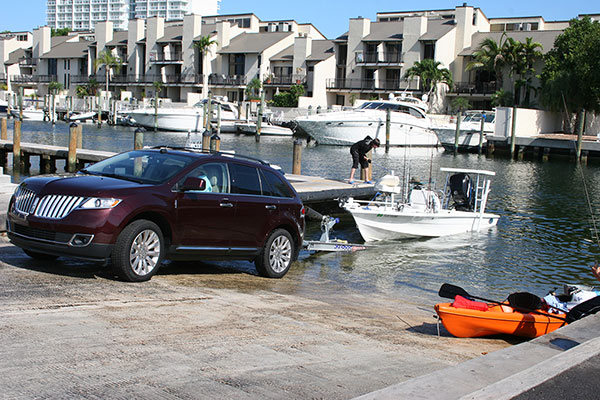Boat U.S. Report
 Boat Ramps
Boat Ramps
It’s a question that’s been asked a million times: “Is everyone paying their fair share?” When it comes to those who recreate on the water together non-motorized and motorized vessel operators who mutually benefit from the use of launch ramps, boating safety programs, conservation efforts and more, a recently released U.S. Government Accountability Office (GAO) study says that answer remains unclear.
Discussions on the equitability of contributions to the Sport Fish Restoration and Boating Trust Fund, a user-pay/user-benefit grant program administered by the U.S. Fish & Wildlife Service, began from a mandate included in the Trust Fund’s 2021 Reauthorization from Congress.
Trust Fund revenue comes directly from import duties or excise taxes vessel operators pay on sportfishing equipment such as tackle boxes and fishing rods, but the single largest bucket of funding (49%) for the Trust Fund come from a special tax that only motorboat operators pay on fuel.
The recently released GAO study, “Recreational Boating: How Vessel Users Contribute to and Benefit from a Federal Trust Fund” looked at (1) The use of nonmotorized and motorized vessels, (2) The extent that users of these vessels have contributed to the Trust Fund, and (3) The extent that the Trust Fund has been used for boating access and safety activities to benefit users of those vessels.
The report concluded that “GAO was not able to determine the specific extent that non-motorized and motorized vessels users benefit from these activities.” One challenge noted was that anyone can purchase products such as sport fishing equipment, so the extent to which boat users – paddlers or motor boaters – are contributing to the fund is not clear.
“What is clear is that the Sport Fish Restoration and Boating Trust Fund has been critical to any vessel operator, giving us the waterway access we need to use our boats, keeping us safer on the water, and supporting fish habitat and healthy waters. And it does so without asking for dime of funding,” said David Kennedy, BoatUS manager of government affairs.
What GAO found:
- More than a quarter of the U.S. population engaged in recreational boating in 2018, according to a survey commissioned by the U.S. Coast Guard. The survey also estimated that more motorized vessels were used (5 million) at least once compared with nonmotorized vessels such as kayaks (3.9 million) the same year.
- The Trust Fund received tax and import duty revenues averaging about $713 million for fiscal years 2012 through 2021, adjusted for inflation. Motorboat fuel taxes make up about 49% of this funding.
The Trust Fund is next set to be reauthorized by Congress in 2026.


